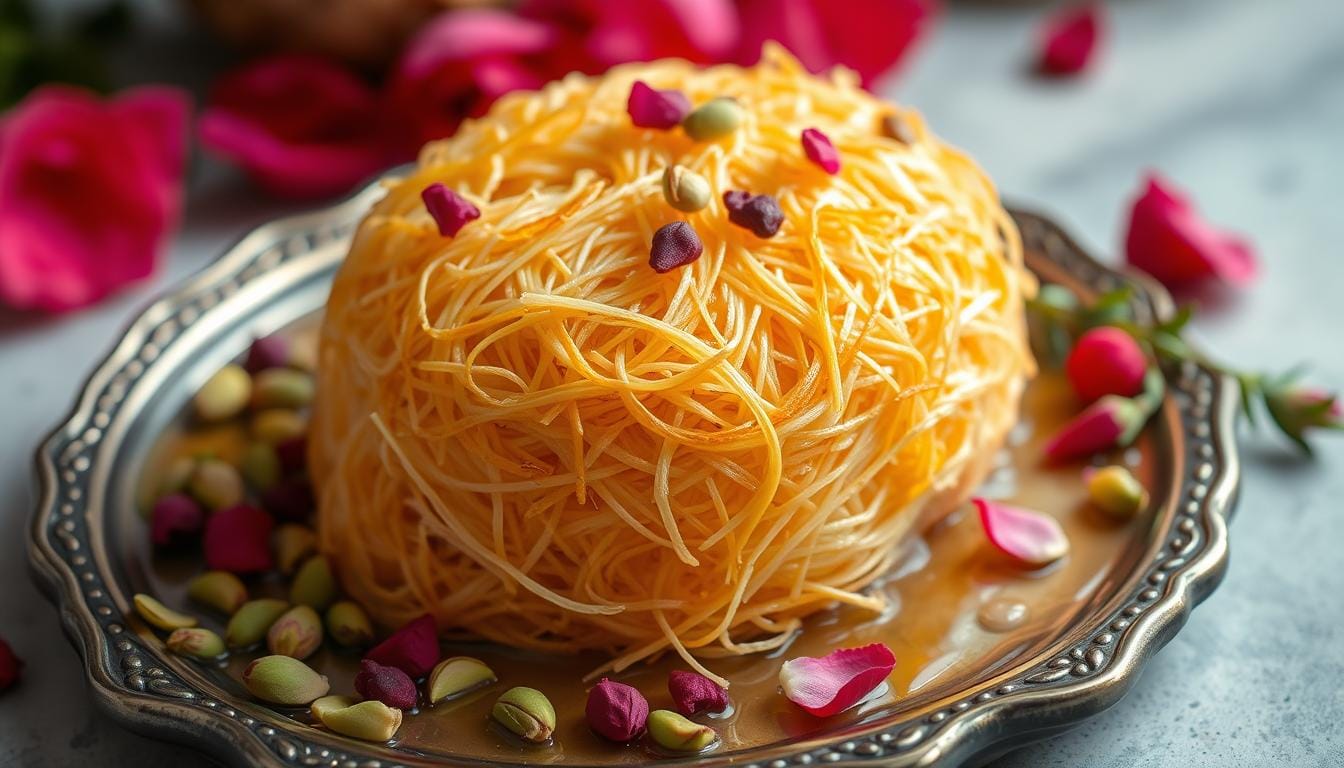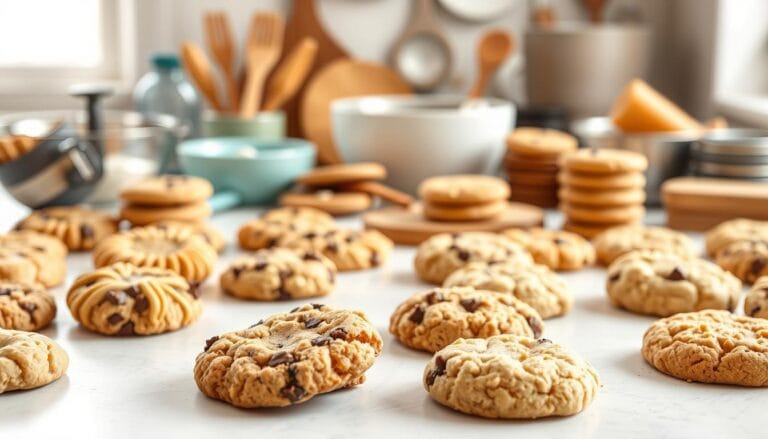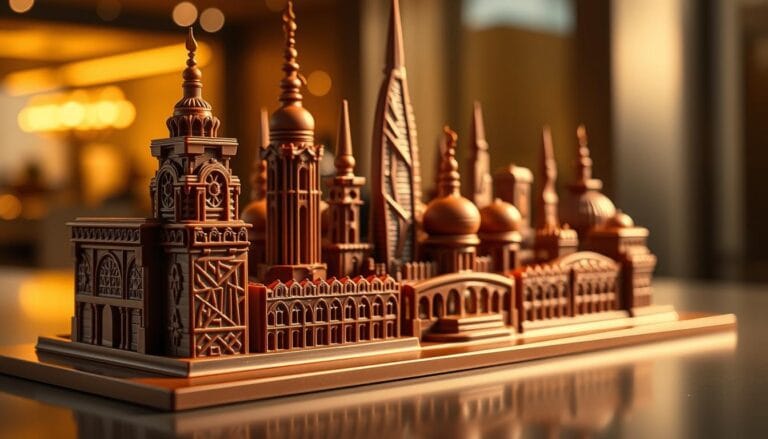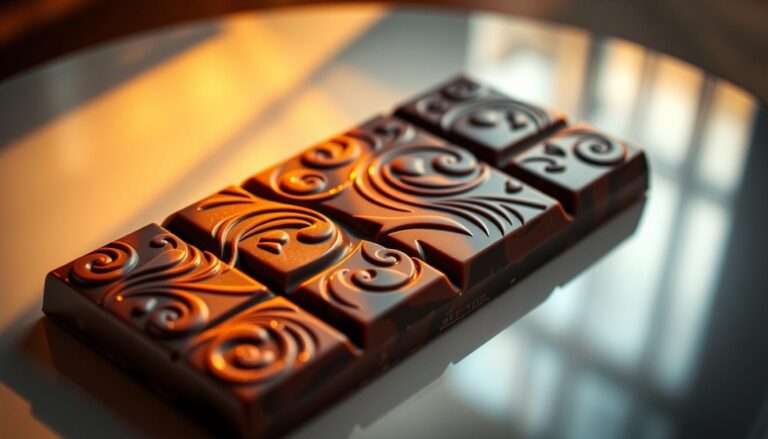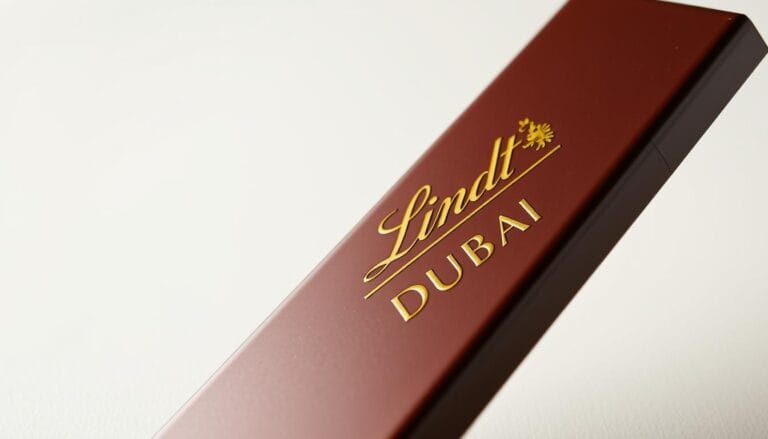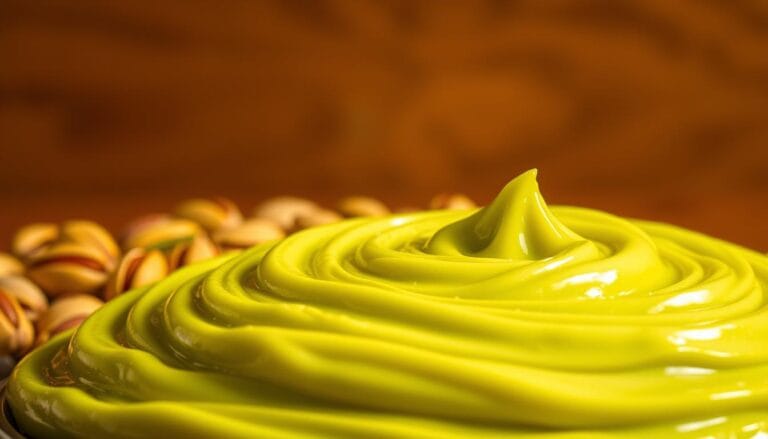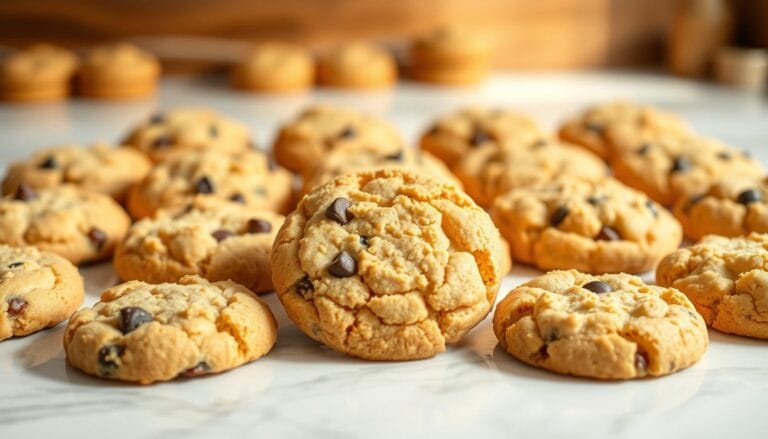What is kataifi pastry, and how is it used in Middle Eastern desserts?
The first time I saw kataifi pastry, it felt like finding a secret. It’s like fine, gossamer threads that turn simple desserts into amazing dishes. This pastry has been a key part of Middle Eastern sweets for many years, mixing tradition and taste in every bite.
Kataifi pastry looks like shredded filo, like fine vermicelli noodles. It comes from the Middle East’s rich food traditions. It’s loved for making some of the most famous desserts you’ll ever try. Whether it’s baked or fried, kataifi adds a special texture to Middle Eastern sweets.
This amazing pastry is a star in treats like knafeh and tel kadayıf. Its crispy, golden strands offer a crunchy yet delicate feel. Kataifi’s flexibility lets cooks make both traditional and new desserts, blending old and new flavors.
Exploring Middle Eastern sweets, kataifi pastry opens a door to a deep, complex food world. Its unique look and ability to soak up sweet syrups make it special. It turns simple ingredients into unforgettable dishes.
Origins and History of Kataifi
Kataifi pastry has a long history in Middle Eastern and Mediterranean cuisine. It’s known for its unique texture and versatility. It’s a key part of traditional desserts, from simple treats to fancy dubai chocolate bars.
The story of kataifi starts in the Ottoman Empire. Skilled pastry chefs created this amazing ingredient. They turned simple things into amazing desserts that spread far and wide.
Traditional Middle Eastern Roots
Kataifi’s story begins in the Middle East’s lively kitchens. Bakers made these delicate pastries with special techniques. It became a sign of welcome, served at big events and family get-togethers.
Chefs mixed kataifi with pistachio cream. They made desserts that honored local traditions.
- Originated in Ottoman Empire kitchens
- Symbolized cultural culinary craftsmanship
- Integral to family and community celebrations
Evolution through Ottoman Empire
As the Ottoman Empire grew, kataifi went to new places. Pastry chefs tried new fillings and methods. They made different versions that showed the pastry’s flexibility.
Cultural Significance across Regions
Now, kataifi means more than just a dessert. It connects families and tells stories of food and culture. From Greek bakeries to Middle Eastern shops, kataifi keeps its true spirit alive.
“Kataifi is not just a pastry, it’s a delicious narrative of cultural heritage.” – Culinary Historian
Understanding Kataifi Pastry Structure
Kataifi pastry is a special treat in the world of baking. It has a unique structure that makes it different from other pastries. This structure creates a delicate web of strands that offer a special texture.
- Ultra-thin dough strands that look like fine angel hair
- A crispy outside with a light, airy inside
- It’s great for both sweet and savory dishes
People looking for a Dubai chocolate bar might enjoy kataifi. Its delicate strands soak up flavors well. This makes it perfect for making new desserts.
| Characteristic | Description |
|---|---|
| Texture | Crisp, lightweight, thread-like |
| Composition | Wheat flour-based shredded dough |
| Culinary Use | Desserts, pastries, savory dishes |
Professional bakers love kataifi for its pairing with pistachio butter. It creates amazing flavors that please the taste buds. Its special structure allows for layers and crunch that make any dish better.
Essential Ingredients for Making Kataifi
To make perfect kataifi pastry, you need the right ingredients. They must work together for the right texture and taste. Knowing what each ingredient does is key for a true Middle Eastern dessert, like Dubai chocolate bar recipes.
Kataifi’s ingredients are chosen carefully. Each one is important for its special taste and feel.
Base Ingredient Breakdown
- All-Purpose Flour: The main part that makes the pastry
- Cornstarch: Makes it light and soft
- Sugar: Adds sweetness and helps it brown
- Salt: Boosts the flavor
- Vegetable Oil: Keeps it moist and tender
- Water: Holds everything together and gets the right mix
Ingredient Functionality
| Ingredient | Primary Function | Impact on Texture |
|---|---|---|
| All-Purpose Flour | Structural base | Provides strength and form |
| Cornstarch | Texture modification | Creates softness and delicacy |
| Sugar | Sweetness and browning | Develops golden color and caramelization |
Quality Considerations
For Dubai chocolate bars or traditional desserts, use the best ingredients. Fresh, high-quality ingredients make a big difference. Choose flour with the right protein, fresh oils, and pure water for the best results.
Choosing the right ingredients affects your kataifi’s texture, taste, and how true it is to Middle Eastern traditions. Each part helps make a dessert that honors the rich food culture of the Middle East.
Step-by-Step Preparation Process
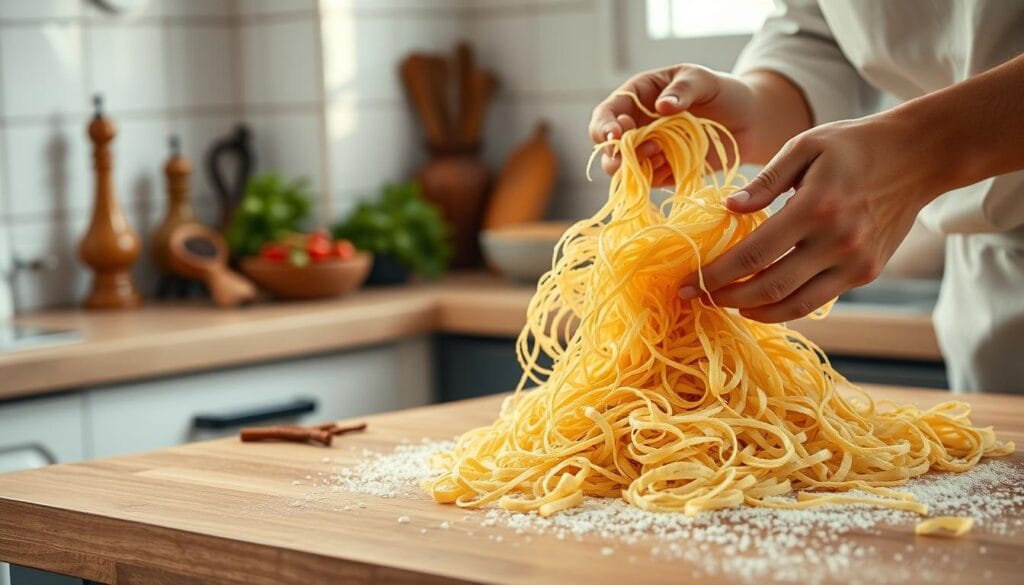
Making kataifi pastry needs skill and care. You start by learning how to prepare it. This guide helps you make a traditional dessert or try a new Dubai chocolate recipe.
First, make a thin batter. It must be smooth and without lumps. Strain the batter several times to get a silky texture. This texture is key for the thin strands.
- Mix flour, water, and a pinch of salt in a large bowl
- Whisk until the batter is light and creamy
- Strain the batter through a fine-mesh sieve to remove any lumps
- Let the batter rest for about 30 minutes
Next, pour the batter through a special sieve onto a hot griddle. This step needs a steady hand and skill. The batter turns into thin strands on the hot surface.
“Perfecting kataifi is an art that combines traditional technique with culinary creativity” – Dubai Pastry Chef
Kataifi is great for new desserts, like the best Dubai chocolate recipe. It adds a unique crunch and sophistication to sweets.
| Preparation Stage | Key Considerations |
|---|---|
| Batter Preparation | Smooth, lump-free consistency |
| Straining | Multiple passes through fine sieve |
| Cooking Surface | Large, evenly heated griddle |
| Strand Formation | Thin, uniform hair-like strands |
Remember, practice is key. Each try gets you closer to mastering kataifi pastry.
Popular Middle Eastern Desserts Using Kataifi Pastry
Kataifi pastry makes desserts in the Middle East truly special. It turns simple treats into amazing experiences. This delicate pastry creates desserts that excite your taste buds and honor rich traditions.
Traditional Sweet Applications
Middle Eastern kitchens love kataifi for making famous desserts. They make:
- Knafeh: A cheese-filled treat topped with sugar syrup
- Ekmek kataifi: A layered dessert with creamy custard
- Osh el bulbul: A fancy bird’s nest baklava
Modern Interpretations
Today, chefs are making kataifi in new ways. They mix traditional methods with modern twists. For example, they use pistachio cream and unique flavors.
Regional Variations
Every Middle Eastern area has its own kataifi twist. Some include:
- Lebanese versions often have rose water
- Turkish ones have more nuts
- Syrian recipes use strong honey syrup
Whether it’s a classic knafeh or a modern dubai chocolate bar, kataifi pastry is a hit. It’s loved for its delicate texture and deep cultural roots.
Dubai Chocolate Bar Trend and Kataifi
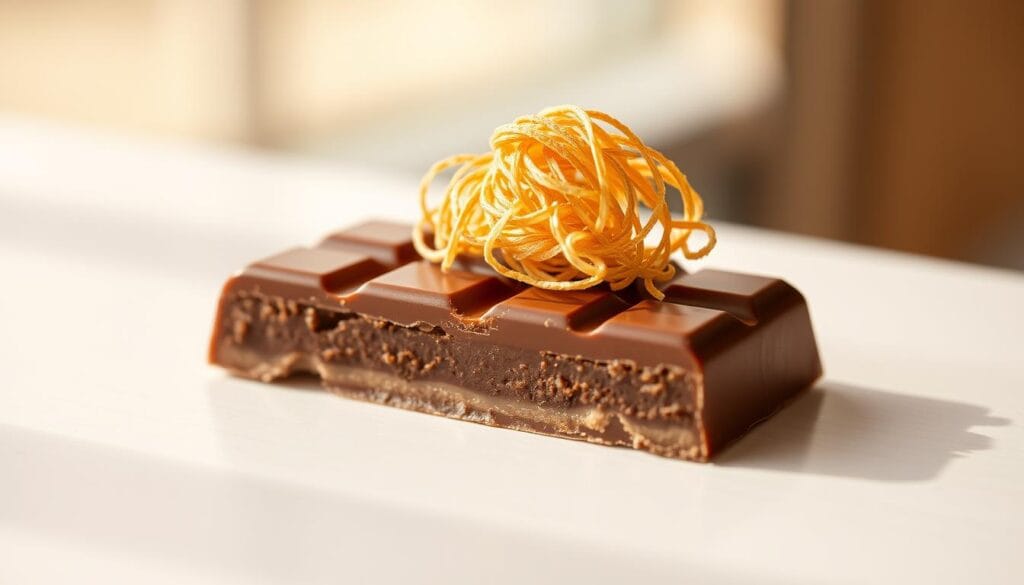
The Dubai chocolate bar is a big hit in the world of food. It mixes Middle Eastern tastes with new pastry ways. This dessert is a hit because of its amazing taste and texture.
Looking for where to buy Dubai chocolate bars? You’ll find many places. Bakeries and chocolate shops in Dubai and other places sell these treats. The recipe includes:
- Kataifi pastry strands
- High-quality dark chocolate
- Crushed pistachios
- Local honey or date syrup
- Delicate spices like cardamom
The Dubai chocolate bar is special because of its flavors. Kataifi pastry makes it crispy and unique. Chefs layer the pastry with chocolate for a special taste.
“The Dubai chocolate bar represents more than a dessert—it’s a cultural culinary statement.” – Gourmet Food Magazine
Want to make your own Dubai chocolate bar? It’s a fun challenge. Use good chocolate and learn to work with kataifi pastry.
| Ingredient | Quantity | Purpose |
|---|---|---|
| Kataifi Pastry | 200g | Creates crispy base |
| Dark Chocolate | 250g | Primary flavor |
| Pistachios | 100g | Adds crunch and flavor |
Love chocolate or exploring new foods? The Dubai chocolate bar is a must-try. It celebrates Middle Eastern pastry traditions.
Storage and Handling Tips
Kataifi pastry needs careful storage to keep its delicate texture. This is key for your best Dubai chocolate recipe or pistachio butter desserts. You’ll find kataifi in refrigerated or frozen packages, about one pound each.
Proper storage is key to keeping kataifi’s unique qualities. Follow these tips to keep your kataifi in top shape:
- Refrigerate unopened packages at 40°F or below
- Freeze for long-term storage up to 3 months
- Keep packaging sealed to prevent moisture exposure
- Thaw refrigerated kataifi in its original packaging
Before using kataifi for your pistachio butter desserts, take it out of the fridge 30 minutes early. Gently separate the strands with your fingers to prevent breaking. If it’s dry, lightly sprinkle with water to add moisture.
| Storage Method | Duration | Recommended Use |
|---|---|---|
| Refrigerated | 1-2 weeks | Short-term baking projects |
| Frozen | 3 months | Extended storage |
Professional bakers say to handle kataifi with care. Always use clean, dry hands and work fast. This way, your Dubai chocolate recipe or kataifi-based dessert will have a perfect, crispy texture every time.
Conclusion
Kataifi pastry is more than just ingredients. It’s a deep dive into Middle Eastern desserts. This delicate pastry connects generations with its unique texture and versatility.
Exploring kataifi pastry opens up a world of flavors. It links old recipes to new ideas. From Lebanon’s syrup-soaked treats to Dubai’s chocolate bars, kataifi is endless.
Try making Middle Eastern desserts or new recipes with kataifi. Its crispy texture is great for sweet and savory dishes. It’s a blank canvas for your creativity.
Learning about kataifi’s history and making it opens up new culinary adventures. Your journey with kataifi is just starting. It promises to bring joy and celebrate Middle Eastern desserts.
Your turn: Bake it, Rate it, Share it!
There are no reviews yet. Be the first one to write one.

